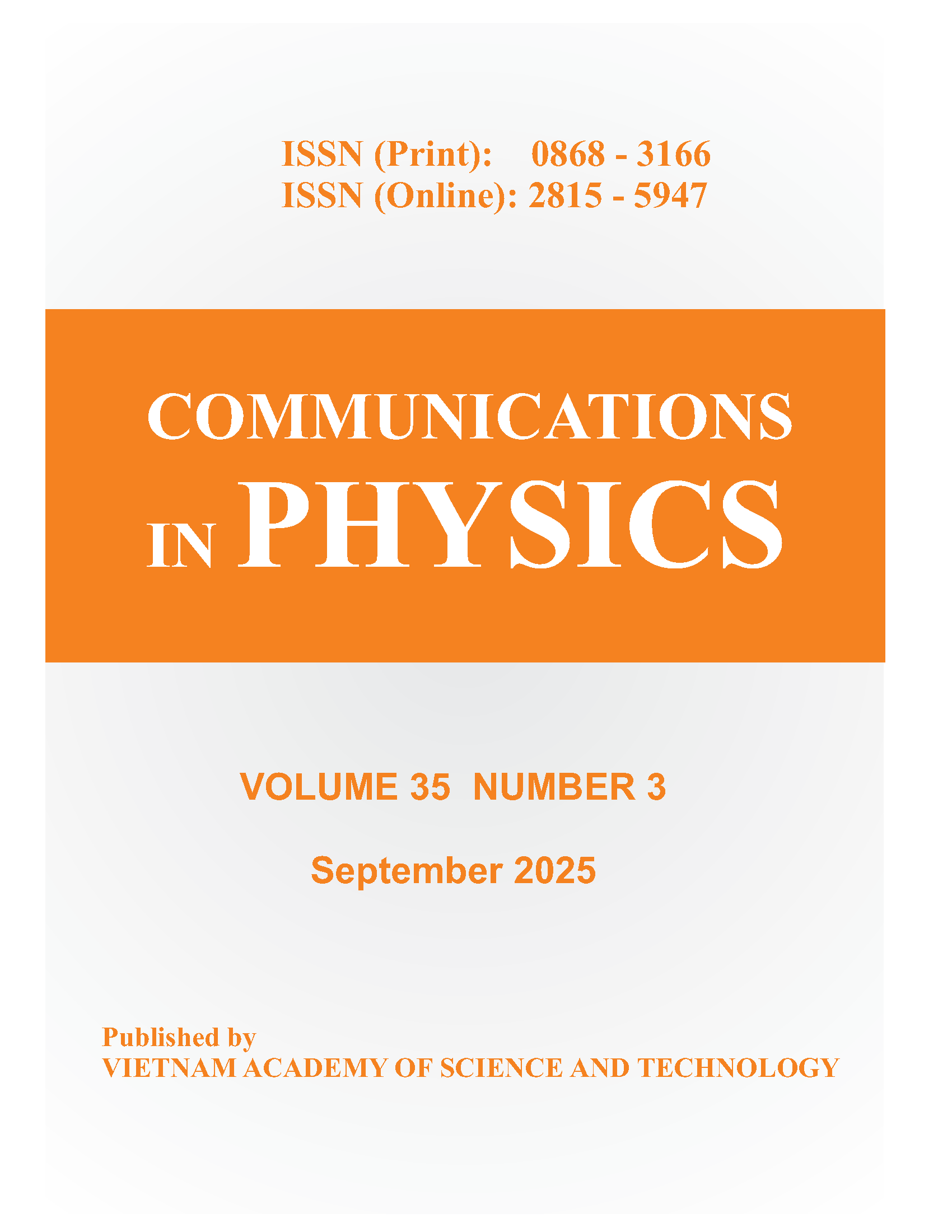Characteristics of Simulated Workplace Neutron Standard Fields
Author affiliations
DOI:
https://doi.org/10.15625/0868-3166/30/1/14275Keywords:
neutron fluence, ambient dose equivalent, simulated workplace neutron standard field, conversion coefficientsAbstract
This paper presents the development of simulated workplace neutron standard fields at the Institute for Nuclear Science and Technology with the 241Am-Be source moderated by polyethylene spheres with diameters of 15 cm and 30 cm. The characterization of the standard fields (in terms of neutron fluence rates and neutron ambient dose equivalent rates) was performed using Bonner sphere spectrometer system together with MAXED and FRUIT unfolding codes. The related quantities such as neutron dose equivalent-averaged energies and fluence-to-ambient dose equivalent conversion coefficients were also determined. The discrepancies of values are satisfied the standard uncertainty criteria as recommended by the International Standard Organization 12789 series. It implies that the simulated workplace neutron standard fields can be applied in the practical works for calibration purposes.Downloads
References
T.N. Le, Tran, H.N., Nguyen, Q.N., Trinh, G.V., Nguyen, K.T.,, Characterization of a neutron calibration field with 241Am-Be source using Bonner sphere spectrometers, Applied Radiation and Isotopes 133, 68-74, 2018.
ISO 12789-1:2008(E), (2008), Reference radiation fields simulated workplace neutron fields Part 1: Characteristics and methods of production, Technical Report, International Standard Organization.
ISO 12789-2:2008(E), (2008), Reference radiation fields simulated workplace neutron fields Part 2: Calibration fundamentals related to the basic quantities., Technical Report, International Standard Organization.
J. Chartier, Jansky, B., Kluge, H., Schraube, H., Wiegel, B.,, Recent developments in the specification and achievement of realistic neutron calibration fields, Radiation Protection Dosimetry 70, 305-312, 1997.
Marcel Goldhagen Reginatto, Paul, MAXED, A computer code for the deconvolution of multisphere neutron spectrometer data using the maximum entropy method, Environmental Measurements Laboratory US-DOE Report EML 595, p. 40, 1998.
Roberto Bedogni, Carles Domingo, Adolfo Esposito, and Francisco Fernández, FRUIT: An operational tool for multisphere neutron spectrometry in workplaces, Nuclear Instruments and Methods in Physics Research, Section A: Accelerators, Spectrometers, Detectors and Associated Equipment 580, 1301-1309, 2007.
C.J. Gesh J. McConn Jr., R.T. Pagh, R.A. Rucker, and R.G. Williams III, (2011), Compendium of Material Composition Data for Radiation Transport Modeling, PNNL-15870 Rev. 1, p. 375, Pacific North West National Laboratory, Washington.
G.F. Knoll, (2010), Radiation detection and measurement, 4th Edition ed., Wiley.
Technical Reports Series No. 318, (2001), Compendium of neutron spectra and detector responses for radiation protection purposes, International Atomic Energy Agency, Vienna.
X-5 Monte Carlo Team, (2005), MCNP-A general Monte Carlo N-particle transport code, Technical Report, Version 5-Vol.II: Users Guide, Los Alamos National Laboratory, California, USA.
ICRP Publication 74, (1996), Conversion coefficients for use in radiological protection against external radiation, Technical Report, Annals of the ICRP 26.
Downloads
Published
How to Cite
Issue
Section
License
Communications in Physics is licensed under a Creative Commons Attribution-ShareAlike 4.0 International License.
Copyright on any research article published in Communications in Physics is retained by the respective author(s), without restrictions. Authors grant VAST Journals System (VJS) a license to publish the article and identify itself as the original publisher. Upon author(s) by giving permission to Communications in Physics either via Communications in Physics portal or other channel to publish their research work in Communications in Physics agrees to all the terms and conditions of https://creativecommons.org/licenses/by-sa/4.0/ License and terms & condition set by VJS.











